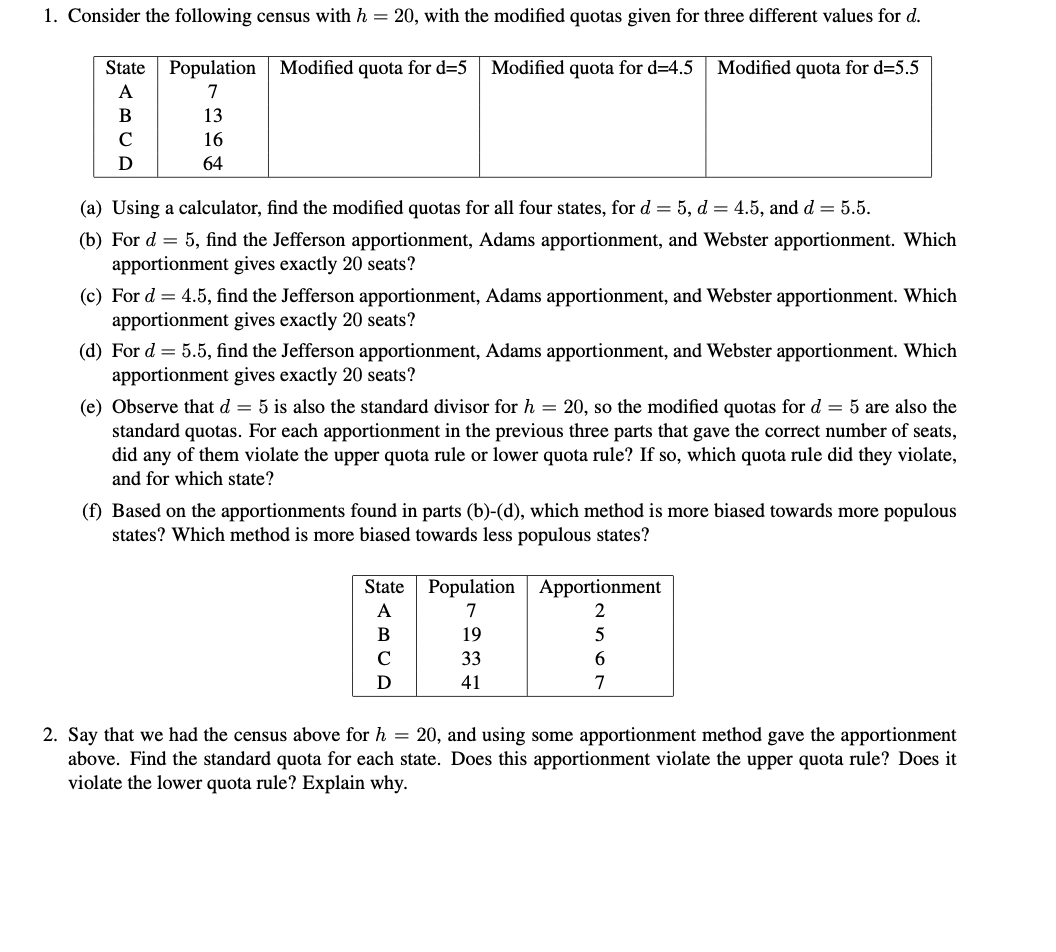Answered step by step
Verified Expert Solution
Question
1 Approved Answer
Please complete Questions 1 a-f and 2. Thank you so much! 1. Consider the following census with h=20, with the modified quotas given for three

Please complete Questions 1 a-f and 2.
Thank you so much!
1. Consider the following census with h=20, with the modified quotas given for three different values for d. (a) Using a calculator, find the modified quotas for all four states, for d=5,d=4.5, and d=5.5. (b) For d=5, find the Jefferson apportionment, Adams apportionment, and Webster apportionment. Which apportionment gives exactly 20 seats? (c) For d=4.5, find the Jefferson apportionment, Adams apportionment, and Webster apportionment. Which apportionment gives exactly 20 seats? (d) For d=5.5, find the Jefferson apportionment, Adams apportionment, and Webster apportionment. Which apportionment gives exactly 20 seats? (e) Observe that d=5 is also the standard divisor for h=20, so the modified quotas for d=5 are also the standard quotas. For each apportionment in the previous three parts that gave the correct number of seats, did any of them violate the upper quota rule or lower quota rule? If so, which quota rule did they violate, and for which state? (f) Based on the apportionments found in parts (b)-(d), which method is more biased towards more populous states? Which method is more biased towards less populous states? 2. Say that we had the census above for h=20, and using some apportionment method gave the apportionment above. Find the standard quota for each state. Does this apportionment violate the upper quota rule? Does it violate the lower quota rule? Explain whyStep by Step Solution
There are 3 Steps involved in it
Step: 1

Get Instant Access to Expert-Tailored Solutions
See step-by-step solutions with expert insights and AI powered tools for academic success
Step: 2

Step: 3

Ace Your Homework with AI
Get the answers you need in no time with our AI-driven, step-by-step assistance
Get Started


